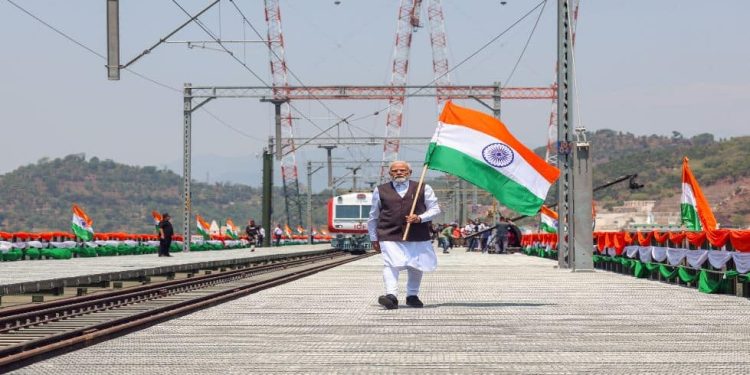New Delhi: In a moment that could become a master stroke in the strategic gaming book of India, Prime Minister Narendra Modi on June 6 unveiled the highest rail bridge in the world – the Chenab bridge – as well as a series of infrastructure wonders in Jammu -et -Kashmir. Although they are praised as engineering triumphs, these structures hide in them a fierce geopolitical message – India silently strengthens its Himalayan border, and Pakistan and China are not satisfied.
359 meters high, higher than the Eiffel Tower, the Archis in Steel Archis bridge is part of the Udhampur-Srinagar-Baramulla rail link (USBRL) and connects the Cashmire valley to the Indian railway gate for the first time. But beyond fear and applause, it was the military and counter-terrorist implications that have sent shock through the border.
Why Pakistan, China should worry
The bridge is located near the perfidious range of Pir Panjal, a mountainous region which acted for decades like a bridge for Pakistani infiltrates, including terrorists supported by ISI of Lashkar-E-To-Toba and Jaish-E-Mohammed.
From Poonch and added to lush forests near Pahalgam, this road has experienced some of the most notorious attacks in the history of India.
Now, with the Chenab and Anji bridges finished and the valley more accessible to the armed forces of India all year round, this infiltration corridor is about to collapse.
“It is not only a bridge. It is a steel hand message to our enemies,” said a high -level defense expert, asking for anonymity.
The bridge not only dissuades Pakistan. He tightens the grip of India on the axis of Jammu-Kashmir-Ladakh, essential to counter Chinese aggression along the real control line (lake).
Troops, weapons and surveillance units can now move transparently – more seasonal delays or logistical gaps.
Hidden comrade
This “Chenab Chakravyuh” – as called by military strategists – is a geo -strategic trap except to be on connectivity. With 24/7 surveillance cameras, anti-corrosion technologies and explosion-resistant materials, the bridge is built to withstand 8.0 earthquakes and even attempts at terrorist bombing.
“They tried to divide us using religion and terror. We respond with steel, resolution and railways,” said a senior Indian army official deployed in the region.
Built with contributions from the Indian Institute of Technology and the Defense Research, the Development Organization (DRDO) and global experts, the Chenab bridge uses high -voltage steel and advanced cable systems.
It is designed to last 120 years, even under wind speeds of 260 km / h.
And with two trains Vande Bharat reported from Katra to Srinagar, the civil integration of the region is now irreversible.
What gets the most Rawalpindi is that it blocks terrorists and makes their long match obsolete. For years, Pakistan has exploited difficult terrain and porous routes to supply disorders in the valley. This door has just closed.
Even the marshal of the Pakistani field Asim Munir must now say that Pir Panjal no longer promotes infiltration, it promotes India.


